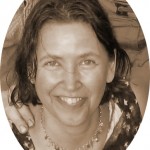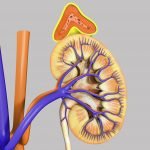Rest: The Undervalued, Inaccessible, Awesome Therapy
Nature Cure Clinical Pearls
Sussanna Czeranko, ND, BBE
All nature wakes with the sun, save only man! All nature goes to rest with the sun, save only man. Like the sun at noon all nature is at the height of activity, and again man is the only exception!
Peter J. Thiel, 1903, p. 354
In our strenuous modern life the art of relaxation is known little and practiced less. Perfect relaxation is of the greatest importance for the conservation of our vital energies.
Henry Lindlahr, 1931, p. 30
How many people seek relief in the most varied methods, by migrating from one sanatorium to the other, when a concentrated rest inside and outside (i.e., rest from work, rest from thinking and rest of the organs) would renew them throughout in the simplest way and fill them with fresh energy.
Benedict Lust, 1915, p. 12
Ours is a culture that has no value or respect for rest. In contemporary hospitals, for example, so-called therapeutic rest for stressed women about to give birth also means pharmaceuticals like zolpidem or a combination of intramuscularly administered morphine sulphate–promethazine hydrochloride (usually 15 mg and 50 mg, respectively), and then letting the patient sleep until she wakes, unless there are urgent complications that require intervention. There are even therapeutic heated mattress pads to be had for folks not about to give birth who need rest. Those mattresses can be ordered with three warming zones, 200-thread count, and 10 heat settings and a booklet counseling the best sleeping tactics and over-the-counter sleep preparations! Very telling is that “therapeutic rest” is not a Medicare term and is not to be found in any of the references to skilled therapy services for Part A or Part B services “either by Medicare or any of their fiscal intermediaries or carriers in their local medical review policies” (Watts & Mullins, 2003). It gets even better. Citing the rules about sleep therapy, Medicare’s complex Part A and Part B services guidelines include the following particulars, keeping in mind that “treatment” here refers to “sleeping”:
Under Part A regulations defined in the Federal Register, Final Rule for Prospective Payment System for Skilled Nursing Facilities, the time counted as treatment time “is a record of the time the beneficiary spent receiving therapy services, not a record of the therapist’s time.—[T]he beneficiary’s ‘therapy time starts when he begins the first activity or task and ends when he finishes with the last apparatus and the treatment is ended.’ Set-up time is included, as is time under the therapist’s or therapy assistant’s direct supervision.” (Watts & Mullins, 2003)
Rest as a therapy may seem to contemporary North Americans as inaccessible and even superfluous in a 21st-century culture whose urgent technologies, rapid economic entanglements, and chronic environmental and political threats accumulate into a lifestyle that does not value slowing down. But perhaps “rest cure” is exactly what we need today, despite the fuss and rattle of economic and political expedience. The arduous and growing complexity of domestic and job-related tasks has not diminished as anticipated when we unquestioningly yielded to automation and global interconnectedness. Around the planet, we witness new and improved household products launched daily in efforts to minimize work and maximize consumer markets. The word minimize does not fit easily our experience of machines and gadgets because they reduce one task, only to create others. Yet, despite the counterfeited time-saving appliances and gadgets that surround us, we find ourselves at the end of the day mysteriously exhausted and oppressed by what we cannot get done. Furthermore, as this phenomenon accumulates over time, we feel increasingly helpless and vulnerable.
The digital universe has captured us in its seductive, virtual embrace. From time to time, when we actually do take a moment to reflect, we may become alarmed at the time spent on e-mails, Facebook, and LinkedIn, and Twitter our alarm to friends or simply spin a bit in our ergonomic chairs because we have no time to spare. The reality is that days are still only 24 hours long. Such a cruelty that clocks have not added extra hours to meet our need for more time for more work is not lost on us during such moments of reflection. Benedict Lust had his take on the problem a century ago, a position that curiously resonates only too well even today with all of us:
After you have done your day’s work, there sets in a moment when the working capacity ceases. You have spent your powers in all directions, and have contracted, so to speak, your spiritual personality to its innermost limit, so that no further powers can be drawn from it. (1915, p. 11)
The Mile-a-Minute Life
As Lust attests, our contemporary, spinning, rushing culture is not new. The stress of rapid living was a problem a century ago too. Ninety years ago, Sperbeck shared his concerns by writing, “In this age of mental strain and high living the problem of fatigue is a daily problem” (1924, p. 260). In such a life rhythm, at moments of high-octane stress and obligation, we drink coffee to make it through the next hour, or through to the last hour before we can slow up, and even sleep. Lust noticed this coffee habit as well. He wrote, “Perhaps you have frequently mobilized your very last resources of energy by stimulating them with black coffee or other means of incitement and excitement” (Lust, 1915, p. 12). Living in the beverage capital of America, I can report that Portland, Ore., has exceptional tearooms, freshly roasted coffee, and a profusion of microbreweries beyond the norm and is, into the bargain, the epicenter of pinot noir vineyards. The collectivity of these time-stretching and stress-masking resources makes living on the dark side fairly routine here.
So, from the other side of this abundance (organic coffee and amazing sun-drenched vineyards), Mother Nature invariably makes her rules for balanced living known when we systematically violate her laws. Lindlahr’s view, in this regard, on the outcome of vital force when people overwork and abuse themselves was quite simple:
If Mother Nature did not limit [their] available supply of voluntary force, [they] would spend not only [their] legitimate daily interest but [their] original capital of vital force in overwork and play or reckless debauch. Therefore, Mother Nature furnishes an abundant supply of vital force for [their] necessary and unavoidable expenditure, for the maintenance of the circulation, breathing, digestion, assimilation, elimination, etc. But when it comes to “voluntary spending money,” [Mother Nature] limits [their] allowance to a legitimate interest on [their] capital. (1911, p. 526)
What Lindlahr is referring to is what we casually call “burnout.” A century ago, von Boeckmann described this burn in familiar language: “We are living in the age of nerve strain. The mile a minute life of today demands the utmost expenditure of mental effort” (1915, p. 718). These days, we might contemplate an exotic vacation when we have reached the end of our rope and feel completely exhausted. Ironically, in an age when such access to tropical venues is more possible than ever, our hopes of being instantly and enduringly rested are as unlikely as in a time when such escape was not so available. Over a century ago, Metcalfe commented on just such a likelihood: “Relief and recovery from the effects of what is improperly ‘over work’ cannot be obtained by simply ‘going away for a change’ or by indulgence in idleness” (1905, p. 103).
As every physician when counseling patients will explain, mere idleness does not deeply address the problems that pressure, monotony, urgency, and accompanying fatigue in the workplace present. Even so, there are solutions and ameliorations, Lust reminded his patients 10 decades ago of what can help. Variety in work, he explained, helps with our stamina to do more. Lust reflected: “An enormous amount of mental work can be undertaken if only sufficient variety is secured” (1912, p. 50). Sometimes “a change of occupation is a recreation” (Lust, 1924, p. 223). Physically monotonous activity accompanied by “continuous mental preoccupation with one and the same object is equally fatiguing” (Lust, 1924, p. 223).
Thinking about the formation of good lifestyle habits to counter the stress and strain of working life, Lust praised those school systems that enabled children to experience summer camps in the open air and seaside. However, Lust objected to the “unnatural conditions [of] . . . many kinds of employment which allow little or no rest on Sundays” (1924, p. 225). In his view, having no time for recreation or rest was responsible for the premature demise of health. Lust opined:
The best division of the day would be to give eight hours to work—to vigorous, tense work—with a full application of all our strength of mind and body—eight hours to lighter occupation (reading, etc.) and recreation (walking, swimming, cricket, foot-ball, etc.) and eight to sleep. (1924, p. 225)
There was no disagreement among NDs about where and how to rest. Howland took the position that “in the first place, the truest rest is only to be found in a condition of harmony with Nature, in life in the Spirit” (1904, p. 250). The NDs extolled and promoted the virtues of Mother Nature and created rustic yet comfortable resorts set in picturesque venues off the beaten track. For his part, Lust built a sanitarium near Butler, N.J., as his healing retreat center. Equipped with “air houses” (tents) and surrounded by woods and rivers, people came to unwind from urban chaos. Lust stated, “Anyone who longs for real recreation and recuperation, who wants to commune with one self, will select a plain village, far away from the deadening crowd, nearby a silent forest” (1909, p. 292). Lust expounded upon the positives of a simple vacation in serene nature. He described such a milieu as being void of calculating waiters and greedy hosts, is a genuine recreation, enlarges the horizon and opens eyes and soul. Untrammeled by fashion and conventionalities, man will again listen to and understand the language of Nature; his taste for simplicity will be reawakened; he delights in whatever is true, in whatever is really beautiful. (Lust, 1909, p. 292)
For those who could not afford a visit to the country, fresh air and rest were equally desirable and important for people stuck in urban environments. Advice from NDs to such patients included their going on to “a balcony, a veranda or a protected garden” (Dr O, 1904, p. 161) to get rested and find fresh air. If these were not available, then sitting in front of an open window would help sooth the spirit and calm the body. Lust affirmed the sentiments of Dr O: “Fresh air is a fundamental rule for the production of sound and healthy sleep” (1900, p. 58).
Another method of inducing “perfect rest” was “a little vigorous exercise” (Howland, 1904, p. 250). From Howland’s and other NDs’ points of view, such attention to daily exercise helped to relieve circulatory congestion. Howland explained: “Possibly some parts of the body may have been unduly fatigued by the work of the day, and others undoubtedly will have had little if any exercise” (1904, p. 250).
True to their dictum that balance is essential in all lifestyle choices, NDs counseled against oversleeping as much as they did against overeating. Metcalfe piped in: “While a proper course of sleep is indispensable for health, there is nothing more pernicious than over sleeping, which brings on sluggishness and dullness of all the bodily functions” (1905, p. 105). Lust reiterated: “If one sleeps longer than the needs of his constitution and the activity of his vital functions demand, there will result firstly a decrease in his mental and corporal strength, on account of lack of active exercise” (1902, p. 112). Metcalfe associated excessive sleep with obesity as a natural outcome: “Too much sleep . . . predisposes to undue corpulency . . . and a tendency to lethargy, apoplexy, and other obese disorders” (1905, p. 105).
Lust was opposed to eating lots of food without taking the precautions of allowing the food to settle and digest: “Never eat a full meal until you know a half hour’s complete rest may follow. The post-prandial period is often more important than the meal itself. A gentle walk is sometimes advisable, or soft music, or merry conversation” (1904, p. 283). Thiel reiterated Lust’s views of overeating. Food was not meant to “become a labor; it should be only refreshment. Brain work does not go well with a full stomach” (Thiel, 1903, p. 354).
How Much Sleep?
For the early NDs, sleep was unarguably the means to restoring and revitalizing the body from the travails of life. Lust expressed it well: “Never rob sleep in time or intensity” (1904, p. 282). Lust also cautioned that the time before sleep should include calm and quiet. With busy schedules, it is too easy to cram into every minute and perform to the very last minute of our day some kind of activity. Lust recommended: “Rest a little before you go to bed. He who works mentally or physically up to the last moment before retiring will not get a healthy and sound sleep” (1900, p. 58). He continued on the subject of mental fatigue, a related concern: “There is no organ in the human body which stands in greater need of rest than the brain, and this rest, the most efficacious one of all, is afforded by sleep” (Lust, 1912, p. 50).
The early NDs understood only too well that everyone was different in his or her sleep or resting needs. Metcalfe wrote, for example: “Brain workers require more sleep than manual laborers. . . . Aged people require less sleep than those in middle life, and adults less than growing children, who should be allowed to sleep as long as they please” (1905, p. 104). The time for sleep was detailed by Lust: “Seven hours at night plus one by day is far better than eight consecutive” (1904, p. 282). And he emphasized that the time before midnight is best: “The sleep before midnight counts double, says an old proverb. 9 or 10 pm ought to be the hour for retiring” (Lust, 1900, p. 58).
Lust had a simple solution to restore harmonious order by simply choosing concentrated rest. He identified rest as “an inner and outer rest” (Lust, 1915, p. 13). He explained: “If you are exhausted from excessive muscular work, you require rest through motionlessness . . . [and] if you have extended your thinking beyond the correct limits, you have to do some mental fasting” (Lust, 1915, p. 13). Lust also recognized and reminded his patients and his colleagues that “the stream of food and drink that flows incessantly into the body” (1915, p. 13) also needed a break.
von Boeckmann viewed the relationship between physical and mental exhaustion as best remedied with rest and a correct breathing pattern. He wrote:
Rest and breathing are the only antidotes for fatigue. . . . The best method of breathing is by the diaphragmatic method (abdominal) for by this method we pump the greatest quantity of oxygen with the least expenditure of physical and nervous energy. (von Boeckmann, 1915, p. 718)
von Boeckmann focused upon the importance of breathing on the relaxation response. He continued with an example of how to relax: “Brain workers should rest frequently and thoroughly. By thoroughly is meant complete relaxation, especially while lying flat. Every muscle should be relaxed so that the body feels limp as a rag. Then slow deep diaphragmatic breathing should be practiced” (von Boeckmann, 1915, p. 718).
Howland insisted that “sleep is, or should be, a true rest and recuperation” (1904, p. 250). Lindlahr also emphasized breathing exercises to promote and induce relaxation and restful sleep. An exercise that Lindlahr used for the practice of complete rest began with a meditative exercise and affirmations. He had instructions for a person sitting or lying down. For the sitting position, Lindlahr suggested:
[The person sits] upright in a comfortable chair without strain or tension, spine and head erect, the legs forming right angles with the thighs, . . . the feet resting firmly upon the floor . . . the forearms resting lightly upon the legs. This must be accomplished without effort, for “effort” means “tension.”Dismiss all thoughts of hurry, care, worry, or fear and dwell upon the following thoughts: “I am now completely relaxed in body and mind. I am receptive to Nature’s harmonious and invigorating vibrations—they dispel the discordant and destructive vibrations of hurry, worry, fear, and anger. New life, new health, new strength are entering into me with every breath, pervading my whole being.” (1913, p. 416)
One hundred years ago, Dr Lindlahr designed this meditative exercise for his fretful and stressed patients to help them find a balance in “the strain of work-a-day hurry and worry” (1913, p. 414). He and his colleagues all over America worked tirelessly (pardon the adverb) to bring balance to the lives of those who were afflicted by a stressful society and very poor health services.
We may concede these days that our efforts to create more time in our day are not working. Perhaps it is time to dust off Lindlahr’s visualization and affirmation and use them once again, as if for the first time. Our naturopathic forebears understood balance and the quality of life. They teach us even to this very day.

Dr Sussanna Czeranko ND BBE
Sussanna Czeranko, ND, BBE a naturopathic physician licensed in Ontario, Canada, and in Oregon practicing since 1994 incorporates “nature cure” approaches systematically into primary care by including balneotherapy, breathing therapy, and nutrition. As the rare books curator at National College of Natural Medicine, Portland, Oregon, she is currently compiling an 11-volume series titled In Their Own Words, based on the Benedict Lust journals published early in the last century. As the founder of the Breathing Academy, a training institute for NDs, she facilitates the incorporation of the scientific model of breathing therapy called Buteyko into their practices.
References
Howland, E. P. (1904). Rest. The Naturopath and Herald of Health, 5(10), 250-251.
Lindlahr, H. (1911). Fatigue and sleep. The Naturopath and Herald of Health, 16(8), 524-527.
Lindlahr, H. (1913). Nature cure. Chicago: The Nature Cure Publishing Co.
Lindlahr, H. (1931). The practice of nature cure. 27th ed. New York: The Nature Cure Library Inc.
Lust, B. (1900). Healthy sleep. The Kneipp Water-Cure Monthly, 1(4), 58.
Lust, B. (1902). About the duration of sleep. The Naturopath and Herald of Health, 3(3), 112.
Lust, B. (1904). Hesukotherapy (rest cure). The Naturopath and Herald of Health, 5(10), 282-283.
Lust, B. (1909). A genuine summer rest. The Naturopath and Herald of Health, 14(5), 291-292.
Lust, B. (1912). Rest for tired brains. The Naturopath and Herald of Health, 17(1), 50.
Lust, B. (1915). The limits of fatigue as a strict law of life. The Naturopath and Herald of Health, 20(1), 10-14.
Lust, B. (1924). The science of health, recreation and rest. Herald of Health and Naturopath, 29(3), 223-226.
Metcalfe, R. (1905). Notes on health: How to protect health and avoid illness; atmospheric air; food; exercise; rest; sleep. The Naturopath and Herald of Health, 6(4), 100-105.
Dr O. (1904). The reclining rest cure. The Naturopath and Herald of Health, 5(7), 160-161.
Sperbeck, H. C. (1924). The problem of fatigue. Herald of Health and Naturopath, 29(3), 260.
Thiel, P. J. (1903). Health hints: Mid-day rest. The Naturopath and Herald of Health, 4(9), 354-355.
von Boeckmann. (1915). Fatigue. The Naturopath and Herald of Health, 20(11), 717-718.
Watts, P., & Mullins, D. D. (2003, February 17). ADVANCE for Physical Therapy & Rehab Medicine. Retrieved November 18, 2012, from http://physical-therapy.advanceweb.com/Default.aspx









